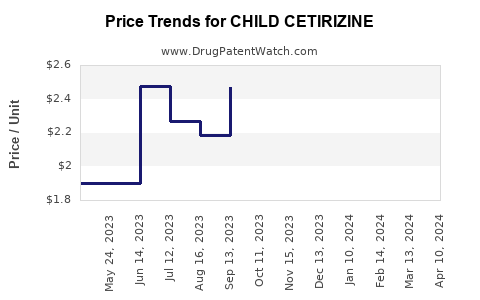Drug Price Trends for CHILD CETIRIZINE
✉ Email this page to a colleague

Average Pharmacy Cost for CHILD CETIRIZINE
| Drug Name | NDC | Price/Unit ($) | Unit | Date |
|---|---|---|---|---|
| CHILD CETIRIZINE HCL 1 MG/ML | 00904-6765-20 | 0.02927 | ML | 2024-11-20 |
| CHILD CETIRIZINE 5 MG CHEW TAB | 47335-0343-83 | 1.72717 | EACH | 2024-11-20 |
| CHILD CETIRIZINE HCL 1 MG/ML | 70752-0104-06 | 0.02927 | ML | 2024-11-20 |
| >Drug Name | >NDC | >Price/Unit ($) | >Unit | >Date |


